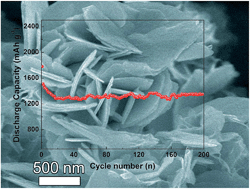
Peeling back the layers: The electrochemical properties and great variety of 2D nanomaterials make them highly attractive candidates for electrochemical capacitors, such as supercapacitors, lithium‐ion capacitors, and sodium‐ion capacitors. Recent research progress in developing 2D nanomaterials for application as high‐performance electrochemical capacitors is reviewed.
Abstract
Two‐dimensional (2D) nanomaterials have drawn a wide range of research interests because of their unique ultrathin layered structures and attractive properties. In particular, the electrochemical properties and great variety of 2D nanomaterials make them highly attractive candidates for electrochemical capacitors, such as supercapacitors, lithium‐ion capacitors, and sodium‐ion capacitors. Herein, a comprehensive review of recent progress towards the application of 2D nanomaterials for electrochemical capacitors is provided. Several typical types of 2D nanomaterials are first briefly introduced, followed by detailed descriptions of their electrochemical capacitor applications. Finally, research perspectives and future research directions of these interesting areas are also provided.


